ovarian mucinous cystadenoma


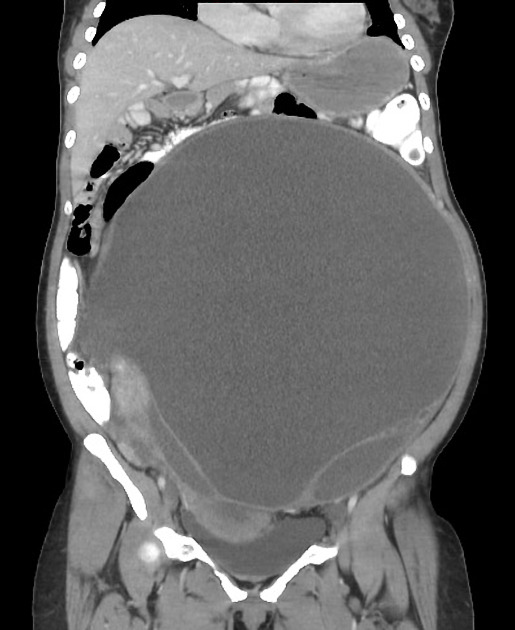
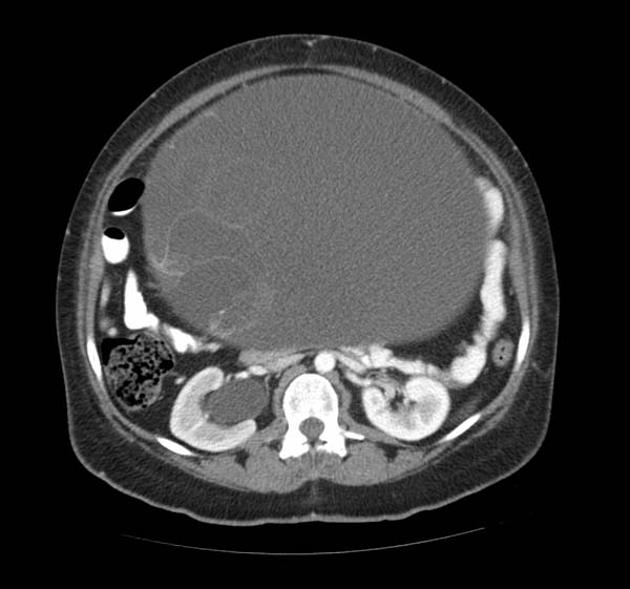

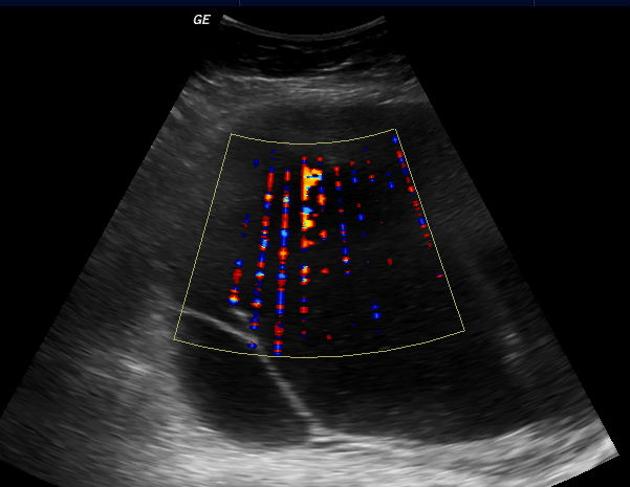
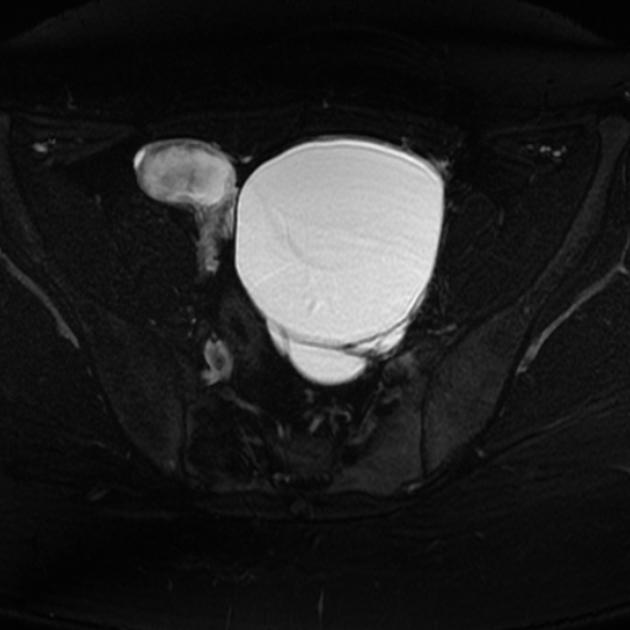
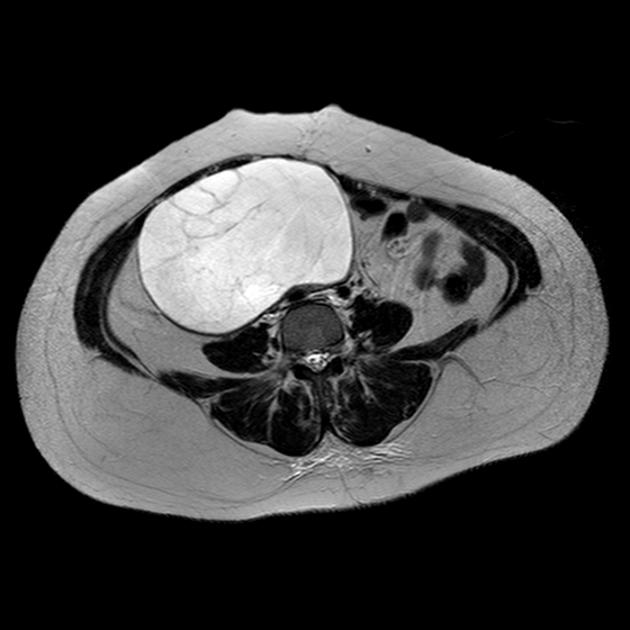



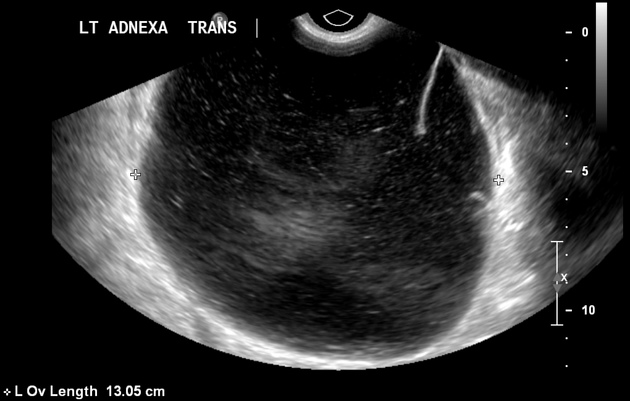

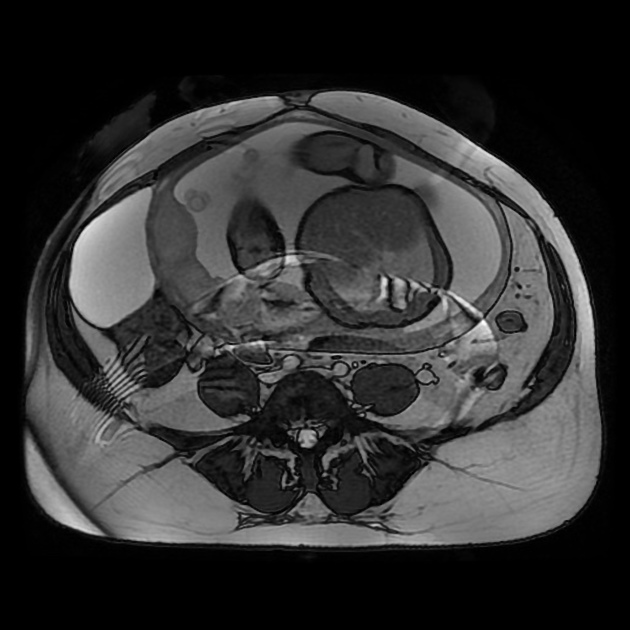

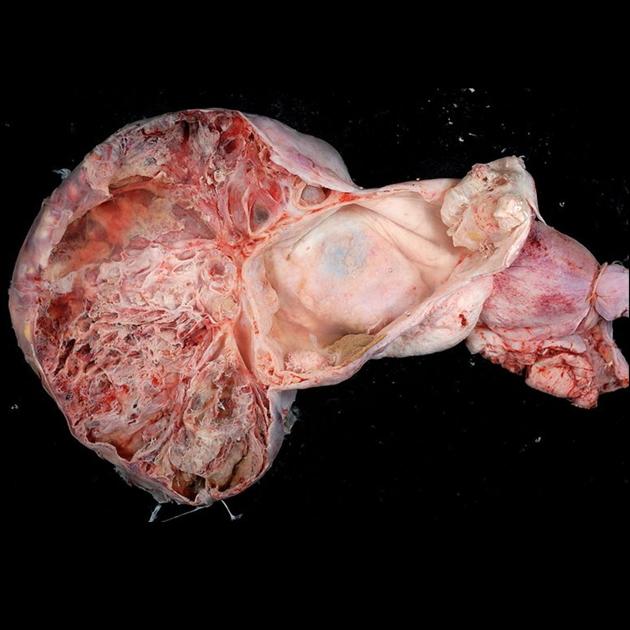
Mucinous cystadenoma of the ovary is at the benign end of the spectrum of mucin-containing epithelial ovarian tumors.
Epidemiology
The estimated peak incidence is at around 30-50 years of age.
They comprise approximately 80% of mucinous ovarian tumors and 20-25% of all benign ovarian tumors.
Pathology
The tumors are lined by columnar epithelium, typically similar to endocervical epithelium, though occasionally an intestinal-type may be seen. These cells secrete thick, gelatinous mucin which fills the locules .
Radiographic features
Mucinous cystadenomas tend to be larger than serous cystadenomas at presentation . Bilaterality is rare (2-5%). Mural calcification is more common than serous tumors.
Ultrasound
- typically large cystic adnexal mass
- multilocular with numerous thin septations
- loculations may contain low-level internal echogenicity due to increased mucin content
- different locules may contain various degrees of echogenicity
MRI
Mucinous cystadenomas are usually seen as large multilocular cysts containing fluid of various viscosity. Due to this reason, the loculi of the tumors often show variable signal intensities on both T1 and T2 sequences. This can sometimes give a “stained glass” appearance. They rarely appear as unilocular cysts.
Treatment and prognosis
A mucinous cystadenoma is benign with excellent prognosis (c.f. borderline mucinous tumors of the ovary or mucinous cystadenocarcinoma of the ovary). Nonetheless, they are frequently surgically excised for histological confirmation of benignity, and due to mass effect of the large tumors.
See also
Siehe auch:
- Pseudomyxoma peritonei
- Neoplasien des Ovars
- ovarian mucinous cystadenocarcinoma
- ovarian mucinous tumours
und weiter:

 Assoziationen und Differentialdiagnosen zu ovarian mucinous cystadenoma:
Assoziationen und Differentialdiagnosen zu ovarian mucinous cystadenoma:

